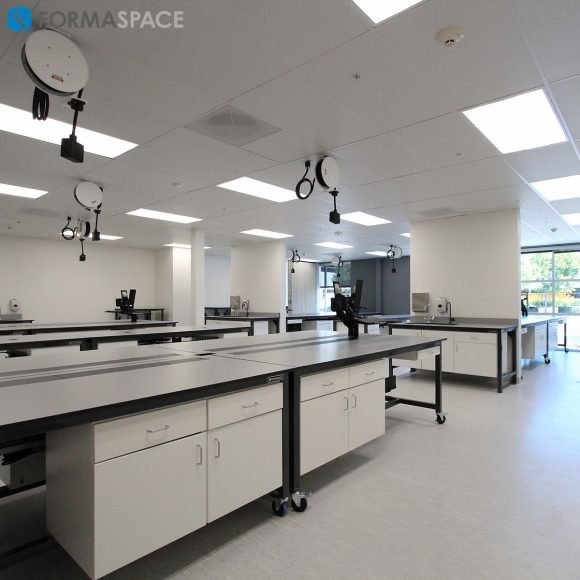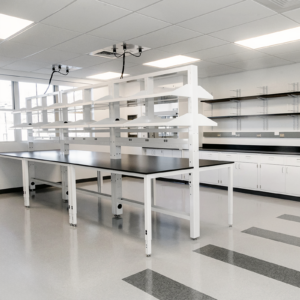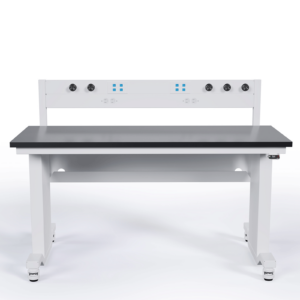Parkinson’s Disease (PD) was first described in 1817 by the English doctor James Parkinson in his work An Essay on the Shaking Palsy. Among lay people, Parkinson’s is associated with obvious neurological symptoms affecting motor functions, such as shaking hands (palsy tremors) or an unsteady, trembling gate when attempting to walk. The disease can also have non-motor system symptoms, including emotional disorders (from depression to obsessive/compulsive behaviors) as well as progressively slower cognitive function – potentially leading to eventual disabling dementia.
The exact cause (or causes) of Parkinson’s is not well understood, but what we do know is that it is a neurodegenerative disease associated with the progressive loss of nerve cells in the mid-brain area (substantia nigra), which, in a healthy brain, would be the source of dopamine supplied to the basal ganglia, another core area in the center of the brain that regulates behavioral control and movement.

Traditional Treatments for Parkinson’s Disease Can Be Effective for a Time, But Can also Result in Debilitating Dyskinesia
Since the late 1960s, the traditional clinical treatment for Parkinson’s was to administer L-DOPA (also known as levodopa or l-3,4-dihydroxyphenylalanine) because, unlike dopamine, it can cross the blood-brain barrier, where it is converted into dopamine by cells in the peripheral nervous system.
It is understood that this artificial supply of dopamine (which replaces the natural supplies of dopamine that are no longer produced by the brain cells affected by Parkinson’s) is the reason that Parkinson’s patients have improved symptoms for a period after treatment. (The measure of their improvement is tallied on a so-called Hauser diary in which patients document how many hours they are affected by symptoms each day.)
Unfortunately, the effectiveness of the L-DOPA clinical therapy can wear off after several years, causing many patients to experience a reversion to even worse trembling symptoms (known as Dyskinesia) than those experienced before commencing L-DOPA therapy.
In 2016, researchers at the University of Alabama discovered a possible reason for this setback. They found that L-DOPA was responsible for making changes to human DNA in the nerve cells in the striatum part of the brain through methylation, a natural process that signals to DNA that they should alter their gene activity. Over time, these changes rendered L-DOPA ineffective, leading to disabling Dyskinesia symptoms.

Promising Results from Early Testing of BlueRock Therapeutics’ Bemdaneprocel Therapy for Parkinson’s Disease
Given the dangerous side effects of long-term L-DOPA clinical therapy for Parkinson’s patients, researchers have been looking for alternatives.
On this front, there has been some good news.
The well-funded biotech startup BlueRock Therapeutics recently announced that it had positive results for its new Bemdaneprocel Therapy for Parkinson’s Disease during an early-stage, year-long trial involving 12 patients.
Patients undergoing the experimental therapy reported that their Hauser diary records showed those on the high dose of Bemdaneprocel had an average of 2.2 fewer hours with symptoms compared to their normal baseline, and those on the lower dose had an improvement of 0.7 hours.
Importantly, the study did not find any safety concerns or significant side effects.
Analysts welcomed the news but cautioned that the clinical threshold for recommending a therapy would be a 1-hour improvement (making the higher dose the only clinically significant result). They also pointed out that since this was not a double-blind study, patients may have reported fewer symptoms due to a placebo effect.
How does the new Bemdaneprocel Therapy for Parkinson’s Disease Work?
How does this new clinical therapy work?
Bemdaneprocel (BRT-DA01) is a new generation of cell therapy that uses human stem cells to create new dopamine-producing neuron precursor cells in the laboratory.
These new neuron precursor cells are then implanted in the patient’s brain where (it is hoped) they will repair or replace the network of dopamine-producing nerve cells that had been previously damaged by Parkinson’s Disease.
Bayer Made Major Investments in Startup BlueRock Therapeutics and its Human Pluripotent Stem Cell (hPSCs) Platform
Bayer has been investigating the idea of creating a clinical therapy platform based on using Human Pluripotent Stem Cells (hPSCs) for several years.
The company helped fund the BlueRock Therapeutics startup through a partnership with Versant Ventures, which provided a $225 million series A round in 2016. In 2019, Bayer bought the company for $240 million.

What is the Potential for Human Pluripotent Stem Cells (hPSCs) in Clinical Therapies?
What is the thinking behind making this major investment?
Bayer believes that if hPSCs can be used to create a successful stem cell-based therapy for Parkinson’s disease, the same biotech processes could be used to create therapies for other diseases.
Researchers have used hPSCs taken from patients with diseases such as Down syndrome and polycystic kidney disease. Comparing these cells to ones derived from healthy patients may lead to important insights into the underlying causes of these conditions.
Other researchers are investing in even more challenging opportunities, such as generating replacement human organs for transplant patients or creating cells that could regenerate damaged cells, such as those after a heart attack or a damaged liver or retina in the eye.
Induced Pluripotent Stem Cells (iPSCs) were Developed as an alternative to Performing Research Using Embryonic Stem Cells
We should point out that while early stem cell research relied on embryonic stem cell lines derived from human fetuses, this became a controversial practice, particularly in regions where abortion is illegal.
Now, researchers have access to new methods for creating stem cells from adult somatic cells, a process known as induced pluripotent stem cells, or iPSCs. The results are very similar, as described in this paper published in 2017 in Stem Cell Research & Therapy.
Different Methods Used to Create Induced Pluripotent Stem Cells (iPSCs)
The technology to create stem cells from adult somatic cells was originally developed in Kyoto, Japan, in 2006 by researchers Shiny Yamanaka and Kazutoshi Takahashi. They discovered that four genes, today known as the “Yamanaka factors,” could successfully convert somatic cells into pluripotent stem cells. Yamanaka and Sir John Gurdon won the 2012 Nobel Prize for this discovery.
This approach not only bypasses the political and religious issues of using embryonic stem cells, but it also opens up the potential for creating personalized, precision medicine solutions based on the genes of an individual patient.
Low Yields are a Problem When Creating Induced Pluripotent Stem Cells (iPSCs)
The technology is still new, however, and there are several daunting challenges to be overcome.

The first is that the process of creating iPSCs in the lab is very difficult and slow, often taking several 3 to 4 weeks to create new human cells. (See diagram above). The yield can be frustratingly small, as little as 0.01 to 0.1 percent, making the prospect of ramping up widescale production for large patient populations very unlikely at present.
Risk of Tumors Developing in Induced Pluripotent Stem Cells (iPSCs) Patients
The second major hurdle is the potential for incomplete or irregular genetic information that could lead to the development of tumors.
An incomplete or incorrect genetic copy of the stem cell could result in mutations being introduced into the patient’s genetic makeup, a frightening prospect.
In some cases, methods such as using viruses to coax the development of iPSCs in the lab have resulted in the expression of cancer-causing genes, which could result in tumors.
What are the Next Steps in Parkinson’s Disease Treatment using Human Pluripotent Stem Cells
In a press release, Blue Rock Therapeutics announced it is planning for a Phase II study that is expected to begin enrolling patients in the first half of 2024.

Formaspace is Your Partner for Laboratory Research
If you can imagine it, we can build it, here at our factory headquarters in Austin, Texas.
Talk with your Formaspace representative today and find out how we can work together to make your next laboratory construction or remodeling project a success.











